Say “Vatican City” and the first thing that pops into your head is likely to be St. Peter’s Basilica or the Sistine Chapel. Together with the basilica and St. Peter’s Square, the Vatican Museums and the Sistine Chapel make up the rest of the Vatican City State that are open to visitors.
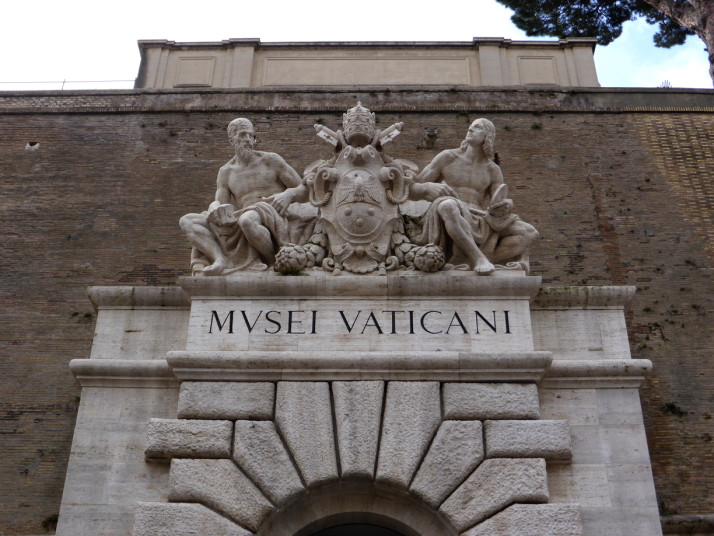
The ornate gate of the Vatican Museum is round the corner from St. Peter’s Square, and it’s quite a walk. This is actually above the exit – though the entrance is just to the left
The Musei Vaticani was founded by Pope Julius II at the start of the 16th century to house and display the many priceless works of art owned by the Catholic Church. That’s the same Pope Julius II who ordered the reconstruction of St. Peter’s Basilica and is known for his patronage of the arts as well as allowing King Henry VIII of England to marry Catherine of Aragon because she was the widow of his brother Arthur, (coincidentally Arthur and Catherine were married at the Old St. Peter’s Basilica).
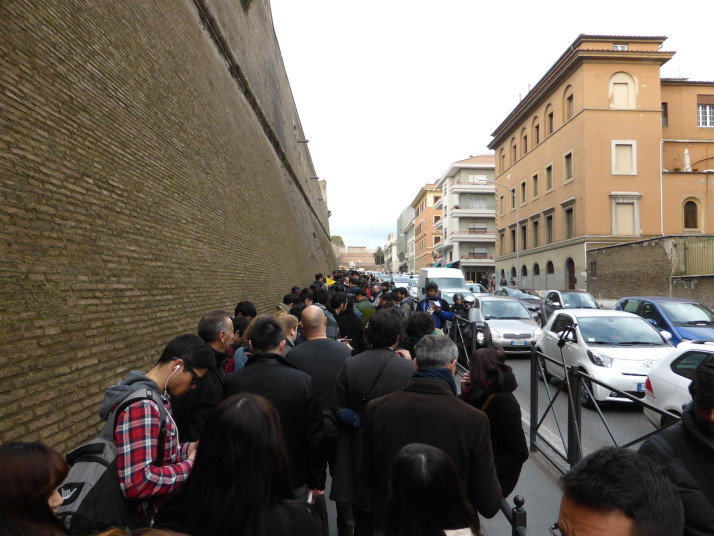
Queueing for the Vatican Museums. Our advice? Book online direct with the Vatican Museums to skip the queues – even in February!
The Vatican Museums are huge. They’re also the 5th most visited art museum in the world and we’d thought about booking our tickets in advance for an extra €4 so we could skip the queue, but decided against it. We don’t mind a bit of queueing.. we got there about 20 minutes before it opened and had to wait an hour and a half. Next time we’d pre-book and skip the queue so we’d have more time inside.
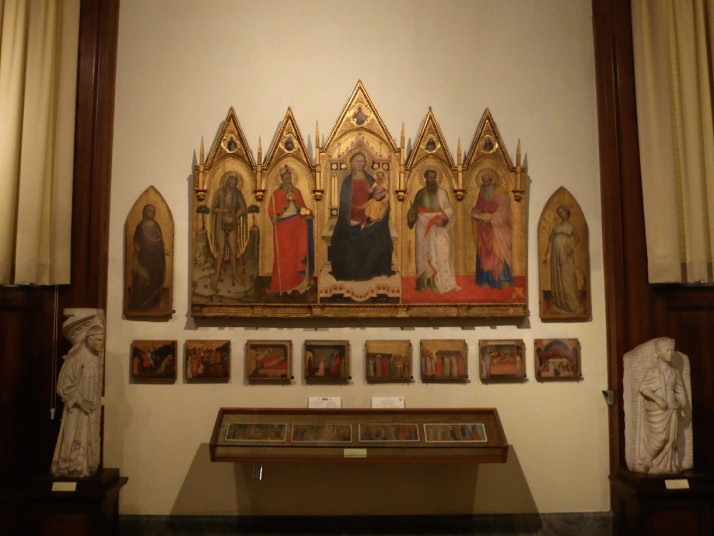
The Vatican Museums are made up of separate galleries, former Papal residences or apartments and of course, the Sistine Chapel. The first gallery we went to was the Pinacoteca which means Picture Gallery. This is a triptych of the Madonna and Child by Giovanni Bonsi from 1371
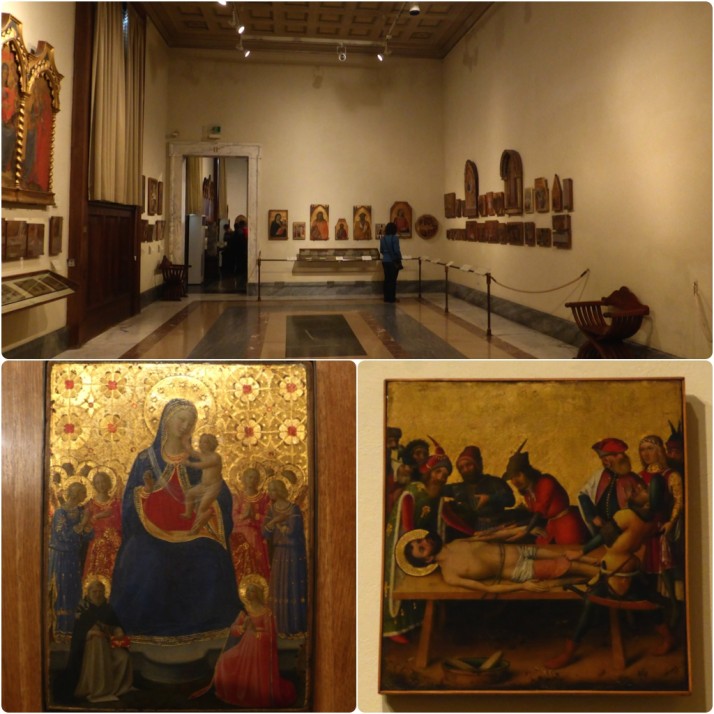
The Pinacoteca contains art of the 12th to 18th centuries, and as with most of the art on display in the Vatican Museums, it’s Christian. Julie checking out the detail on the icons in the first room, “Madonna and Child with St. Dominic and St. Catherine of Alexandria” by Beato Angelico, and “The Martydom of St. Bartholomew” from Scuola Renana (School of Renana)
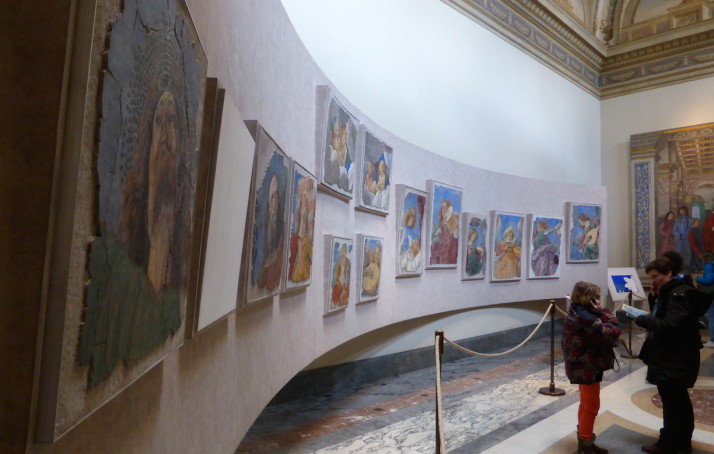
We liked these frescos depicting the Ascension that were rescued from the apse of the Basilica SS. Aposotli in Rome before it was redecorated. Attributed to Forli
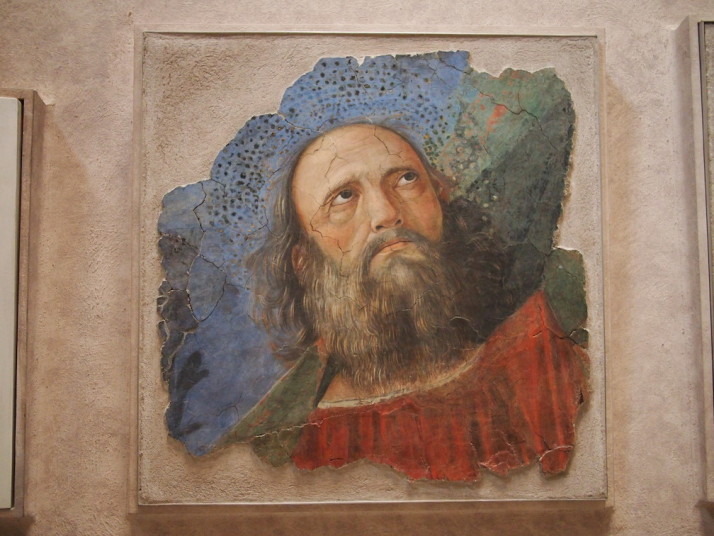
Close up of one of the rescued frescos
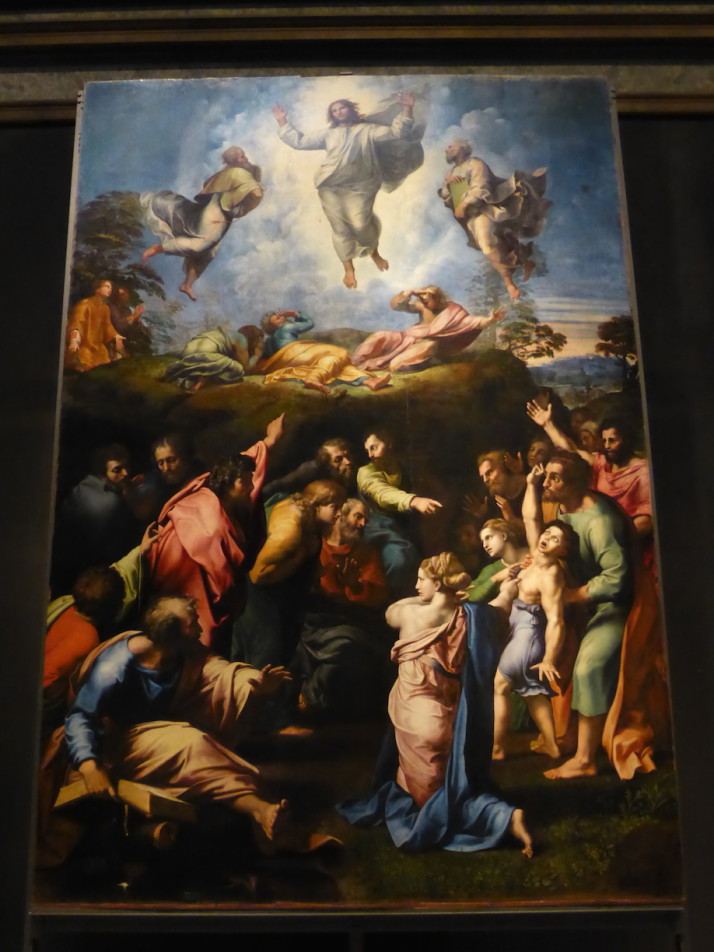
Transfiguration – the last painting by the Italian master painter and sculptor Raphael which he was still working on when he died in 1520. It was later taken by Napoleon and displayed in the Louvre before being returned to Rome
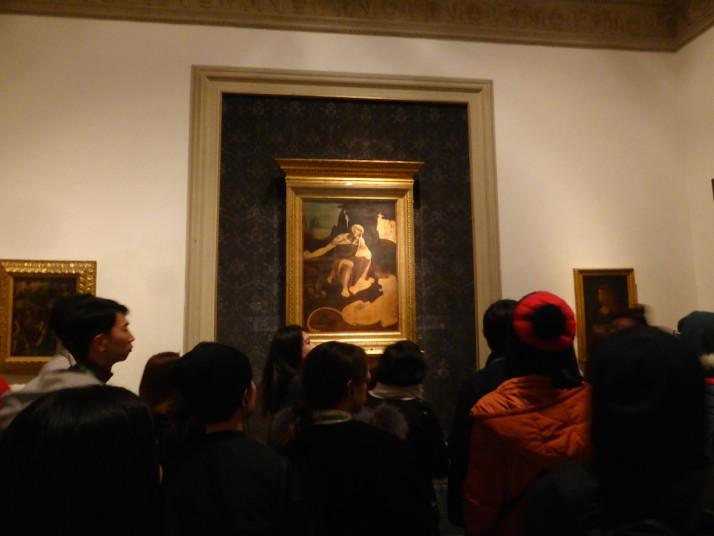
Another famous and unfinished work of art is St. Jerome in the Wilderness by Leonardo d Vinci – the audioguide told us that it had been cut up, and that the head was found on a stool! We saw the tour group kneel down in front of it and didn’t know why – until we tried it ourselves and from that angle we could see how it has been put back together!
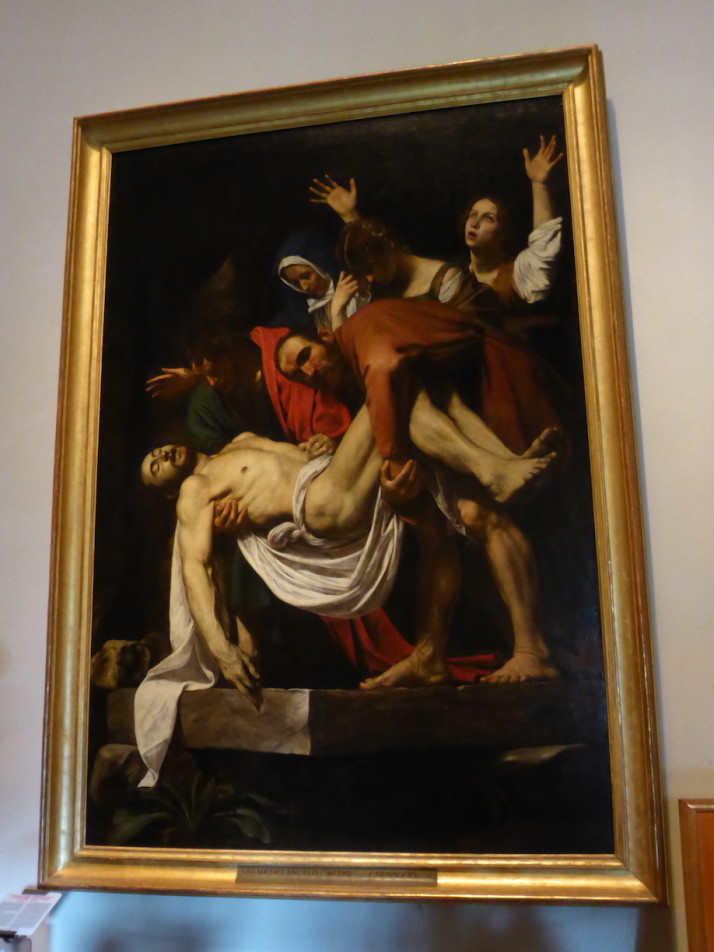
As you might have noticed we’ve found a love for the works of Caravaggio since we saw our first one at St. John’s Co Cathedral in Malta. The Pinacoteca gallery has his 1603-4 work entitled “The Entombment of Christ”
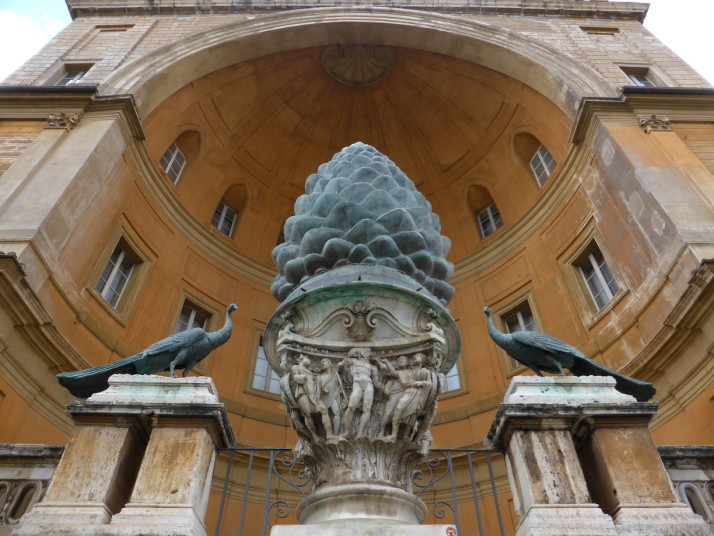
After the Pinacoteca we went to the Cortile della Pigna or the The Courtyard of the pinecone, named after the giant Roman bronze pinecone that used to be the centrepiece of a fountain. We liked the large outdoor apse shape behind it too that reminded us of the giant tiled entrances of the medressas in Uzbekistan
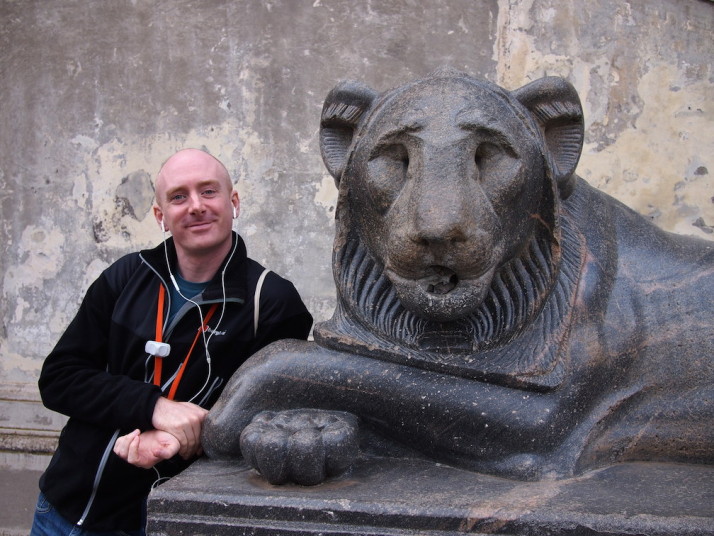
The giant Roman bronze pinecone is flanked by a pair of gorgeous matching Egyptian marble lions, that are believed to have been made for a sanctuary in Northern Egypt around 360 B.C., and also once stood outside the Pantheon
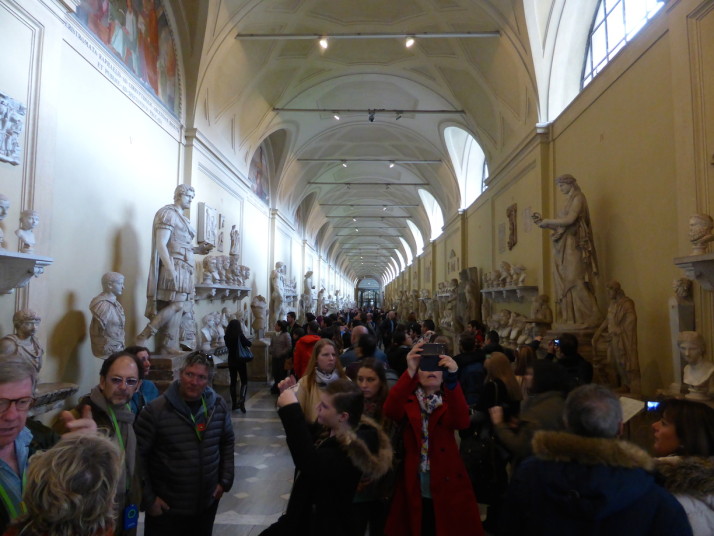
Down one side of the Courtyard of the Pinecone is the Museo Chiaramonti which houses most of the Vatican’s collection of Roman statues
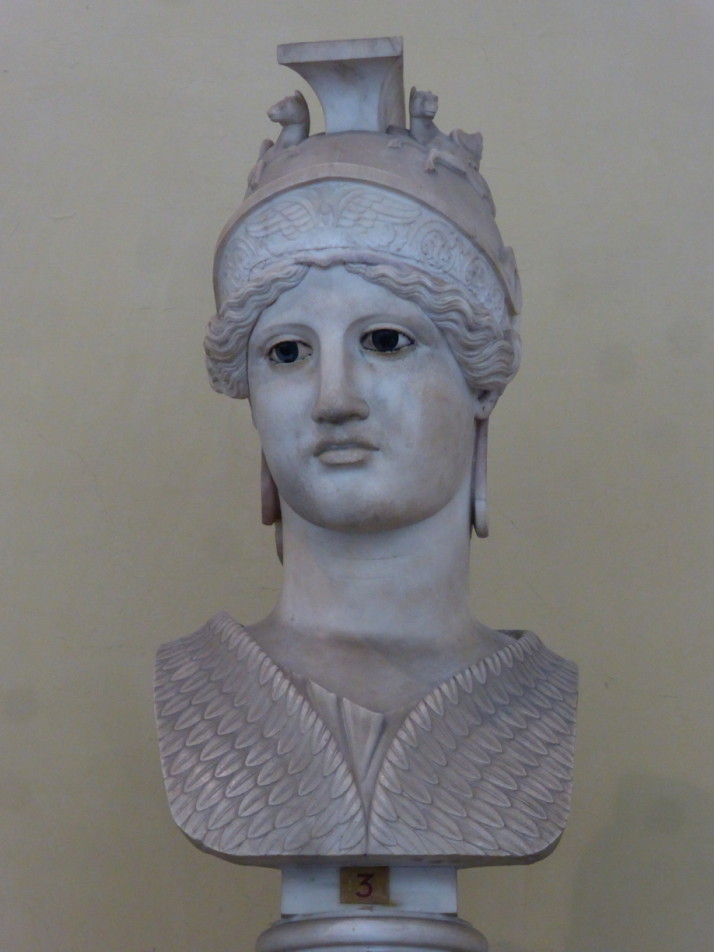
Among the collection is this colossal head of Athena which is notable for two reasons – firstly, it’s from the time of Hadrian (117 to 138 A.D.) who rebuilt the Pantheon and also built Hadrian’s Wall near our home in the UK which, at the time, marked the northern limit of Roman Britain, and secondly it still has its eyes – yes, they’re original!
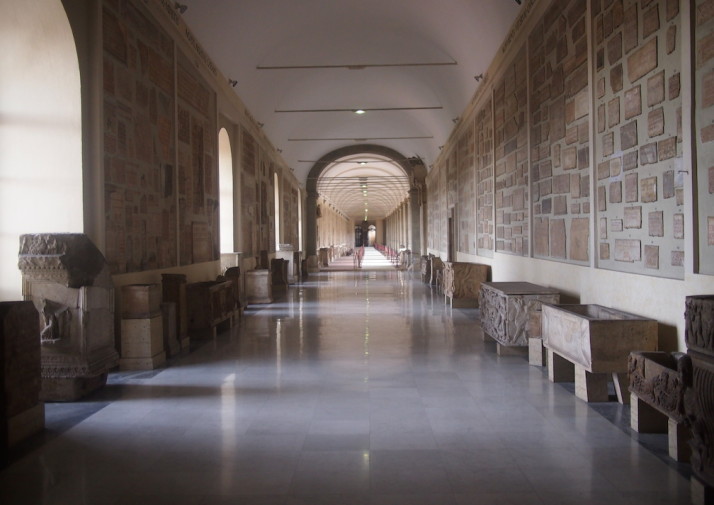
The second section of the Museo Chiaramonti was closed, and contains a collection of Christian and Pagan tombstone inscriptions. The Pagan ones are on the left
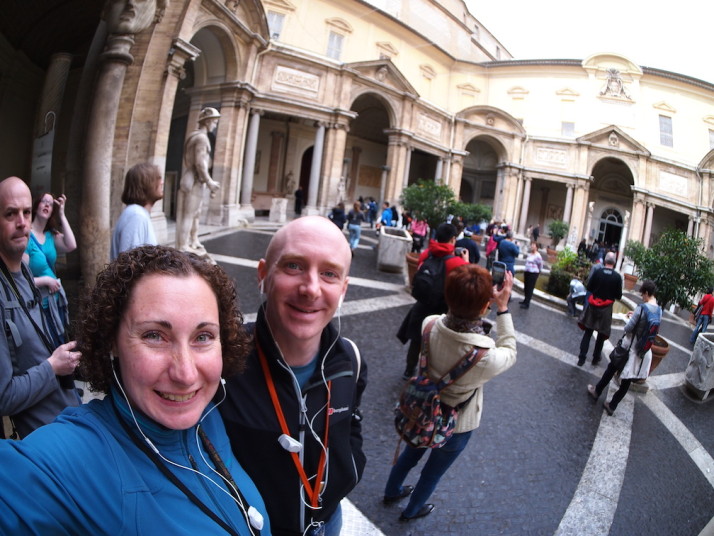
Next up is the Museo Pio Clementino, a smaller musuem home to the collection of Greek and Roman antiquities..

.. such as the famous Laocoön statue, said to be of the Trojan priest Laocoön and his sons who warned against bringing in the wooden horse left outside the gates by the Greek soldiers. The story goes that the gods favoured the Greeks and sent two giant serpents to silence them. The Romans see the death of these innocents as crucial to the decision by Aeneas who heeded Laocoön’s warning and fled Troy, leading to the eventual founding of Rome
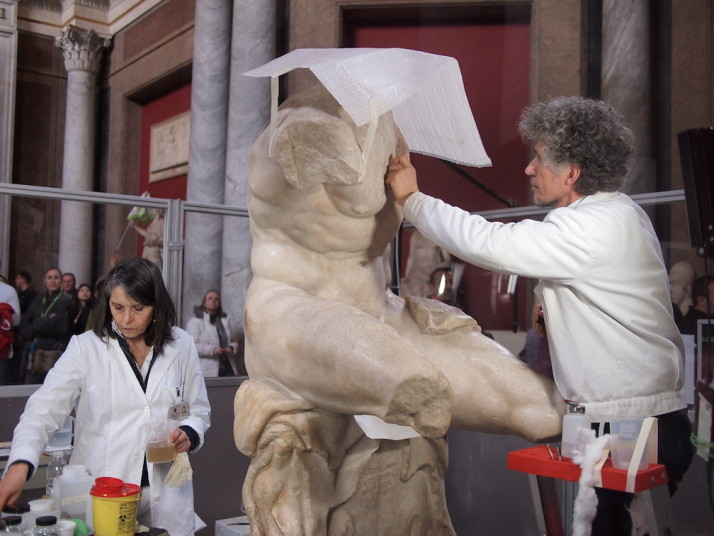
Together with the Laocoön statue, the Belvedere Torso was a major influence on the Renaissance artists – and especially Michelangelo – you might recognise the contorted torso a little later on in this post..

Although the Museo Pio Clementino is one of the smallest, it contains some of the largest art in the entire collection – most of which are displayed in this wonderful circular room with a 5m (16ft) monolithic porphyry basin from the Domus Aurea in the centre
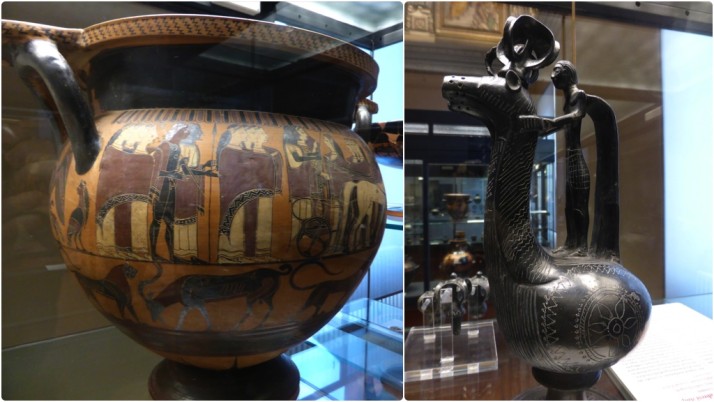
The next gallery on the complete itinerary of the museum is the Museo Gregoriano Etrusco or Museum of Greek and Etruscan artefacts. The Etruscans pre-date the Romans and the vases in the museum are the best record of their daily lives and rituals. While we can only take so much pottery, it would have been nicer to have a bit longer in this gallery as we were just getting to the good stuff when we were asked to leave because it was closing at 13:30. Left is one of said vases, the jug to the right is styled on a chariot and has two separate spouts for different liquids
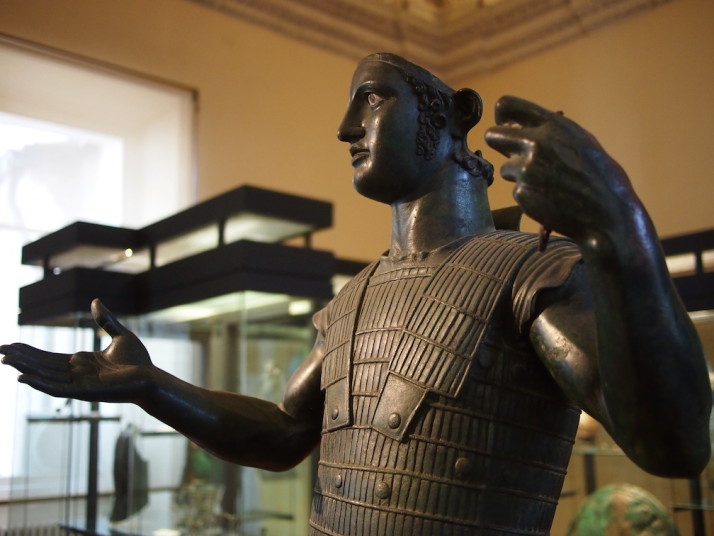
This life-size bronze statue of a warrior holding a spear in one hand and pouring himself a drink before battle is called The Mars of Todi, and dates to the 5th century B.C.!
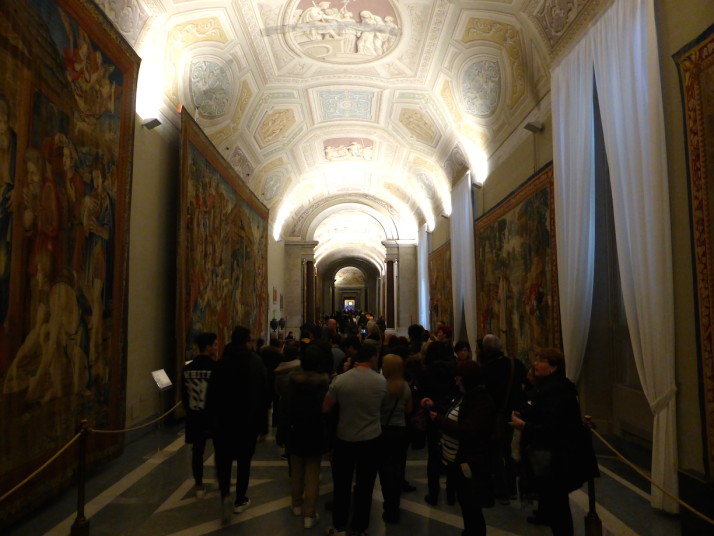
Now begins the long corridor of galleries towards the Sistine Chapel (and I bet you thought we were almost there!) The Galleria degli Arazzi showcases some of the tapestries from the Vatican collection. We’re even less keen on tapestries than we are on pottery so we only stopped briefly to look at them
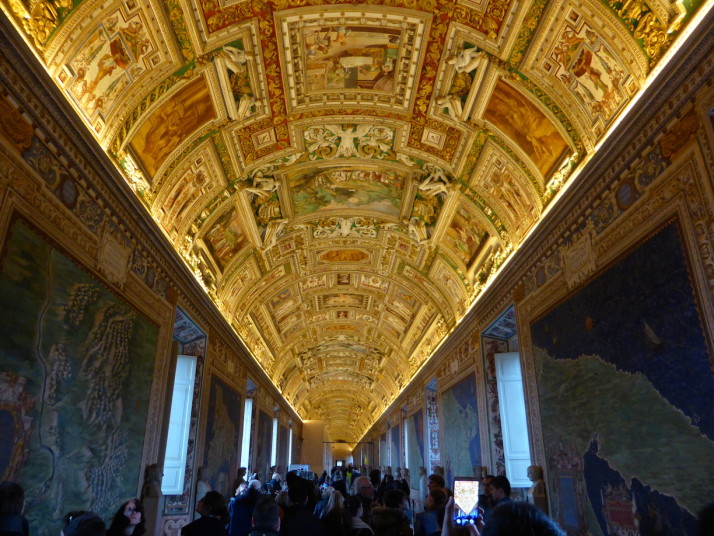
However, the Galleria della Carte Geografiche or Gallery of Geographic Maps was much more to our liking! Painted by friar and geographer Ignazio Danti in 1580, it took him 3 years to cover the walls in 40 frescos mapping out the entirety of Italy. Check out the ceiling too! It was done by a group of artists in the late Renaissance Mannerism style
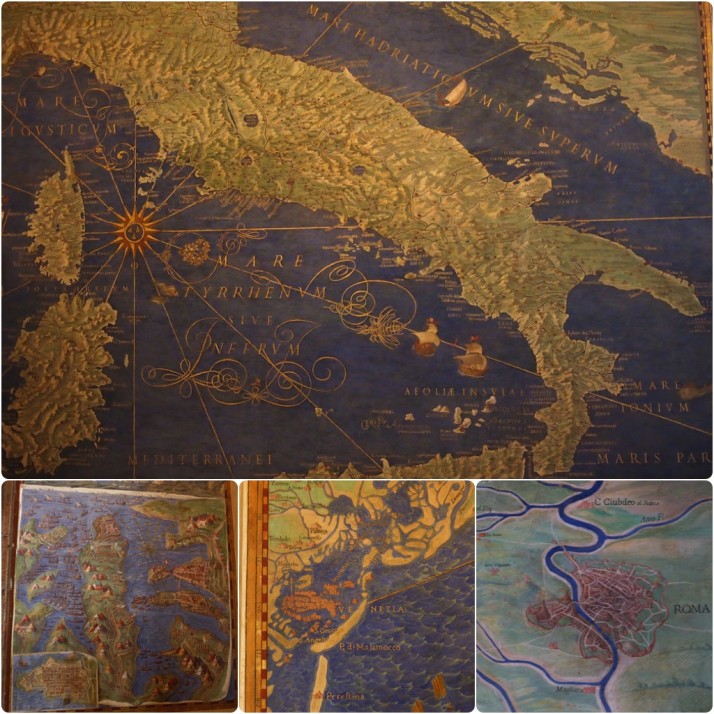
A selection of the map frescos painted in the 16th century. Mainland Italy, Rome was still quite small, while Venice looks completely populated, and Valletta on Malta doesn’t yet include St. John’s Co Cathedral which would have only just been finished
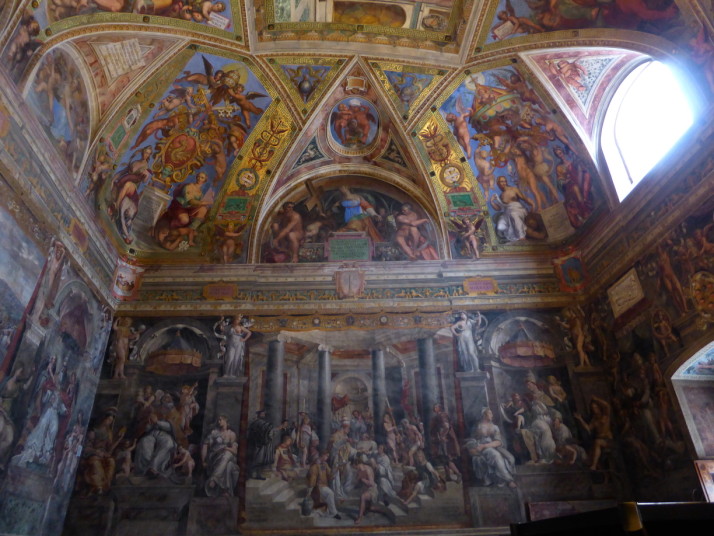
At the end of the long galleries we could have headed into the Sistine Chapel, but we continued the complete itinerary for one main reason.. Stanze di Raffaello or The Raphael Rooms. Painted by Raphael and members of his workshop at the same time Michelangelo was working on the ceiling of the Sistine Chapel, they were in competition to out-do each other. These rooms were the previous Pope’s private apartments. As if to whet the appetite for the Sistine Chapel later on they’re all lavishly decorated with frescos – this is the Baptism of Constantine in the Constantine Room by Gianfrancesco Penni
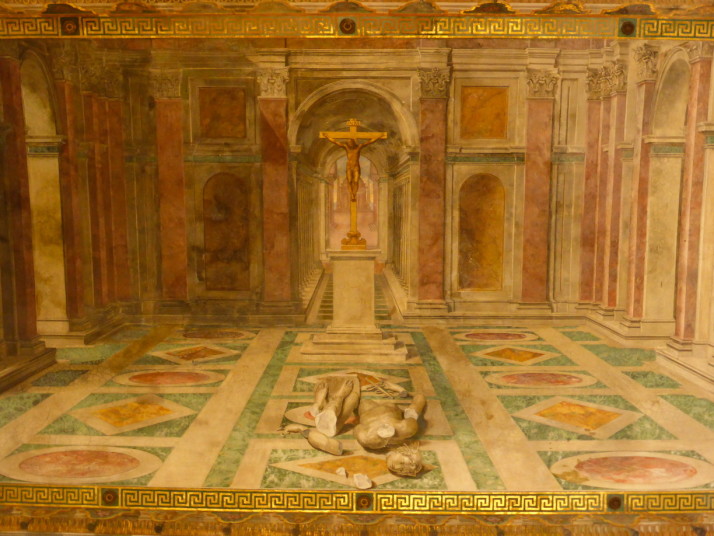
It was a highlight for us because of the ceiling fresco that depicts a statue of the crucifixion atop a pedestal, having displaced a Pagan statue now lying in pieces on the floor
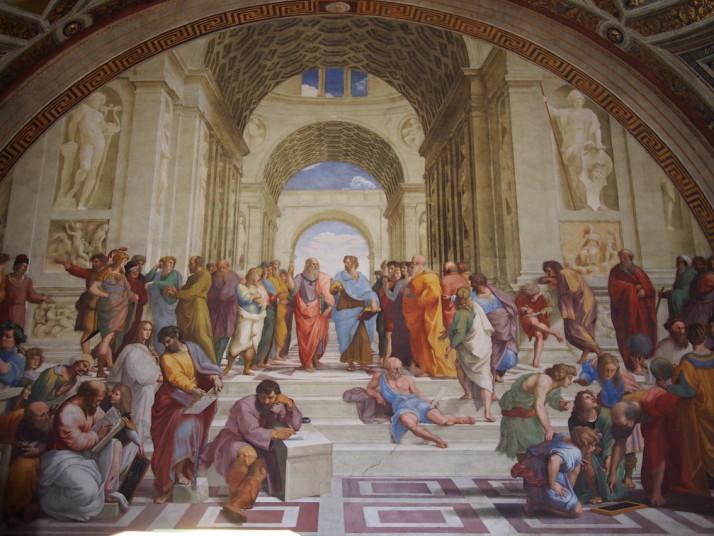
This, one of Raphael’s most famous frescos is called the School of Athens and depicts Philosophy, the pursuit of Knowledge, and Science. The 2 central characters are Plato and his student Aristotle deep in conversation
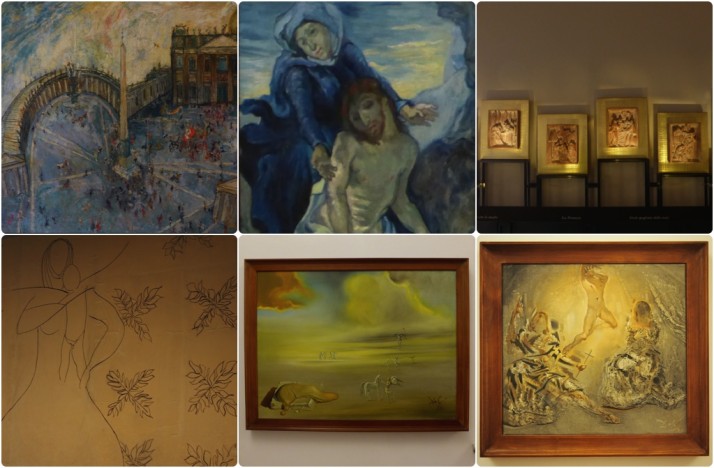
After the Raphael rooms and the old Pope’s apartments, there was a series of galleries of contemporary art which we kind of had to rush through as it was almost 3:30pm – the museums start closing at 5:30pm! Clockwise from top-left: “Piazza San Pietro” by Franco Gentilini (1948); “Pieta” by Vincent van Gogh (1889); Unknown; “L’ Annuncio” (The Trinity) by Salavador Dali (1960); “Paesaggio angelico” by Salvador Dali (1977); “La Vierge à l’Enfant” (Madonna and Child) by Henri Matisse (1949)
After descending a couple of floors through a plain-white, square-spiral staircase decorated with the scuff-marks from the passage of 5.5 million tourists and umpteen signs requesting silence and no photography, we arrive at the Sistine Chapel. Wow. It’s busy with tourists and it’s busy with decoration..
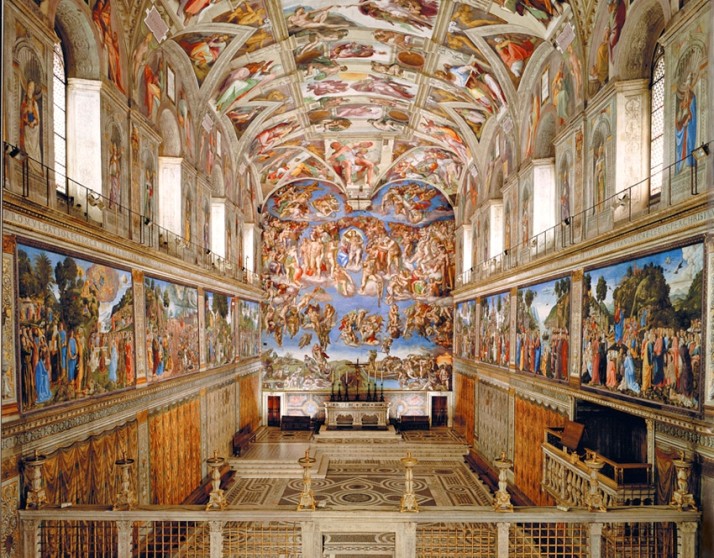
We’re here – the world famous Sistine Chapel! From the bottom, large painted drapes sit underneath biblical scenes of the life of Moses down one side (left) and Jesus on the other (right), Popes in between the windows, then Michelangelo’s ceiling starts with the Ancestors of Christ, separating the Prophets and finally the central rectangle of 9 scenes from the Book of Genesis. Photo source: Professor M Whalen
It took a little understanding of the compositional elements, and obviously some Christian bible history to fully appreciate the genius of Michelangelo’s reluctant masterpiece. I say reluctant because he took some persuading, not least because he considered himself a sculptor. The offer of free reign to decide the biblical stories instead of the initial 12 apostles he was originally asked to complete and the Pope’s insistence got his agreement.
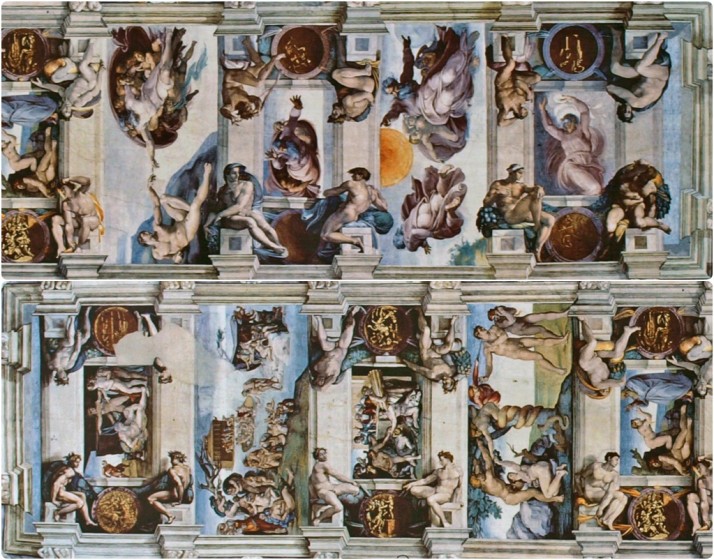
Michelangelo’s stunning central frescos of the Sistine Chapel. Starting at the altar end (top-right), it starts with God dividing light and dark, and shows us looking up at God. It’s believed to be a self-portrait of Michelangelo painting the very ceiling we’re looking at – like a 16th century selfie! #MyNeckHurts. Photo credit: Wikipedia
Initially asked for 12 apostles, Michelangelo sought a much grander plan to repaint the entire ceiling which was dark blue with gold stars. He got his way, and spent 3 years from 1508 to 1512 standing upright and bending backwards on scaffold of his own invention to create this iconic masterpiece of over 300 figures.
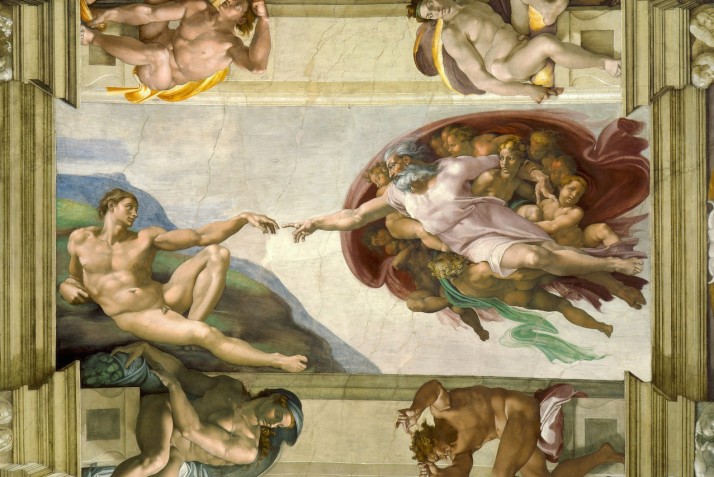
Having created Adam, God reaches out his strong, pointed finger to touch that of Adam’s limp one to bring his creation to life. And at the same time Michelangelo creates probably the most iconic image of all time. Photo credit: Wikipedia
The Pope loved it. 23 years later Michelangelo was commissioned to return to the Sistine Chapel to repaint the alter with the theme of The Last Judgement, the story of the end of the world where Christ returns and final judgement about heaven and hell is made.
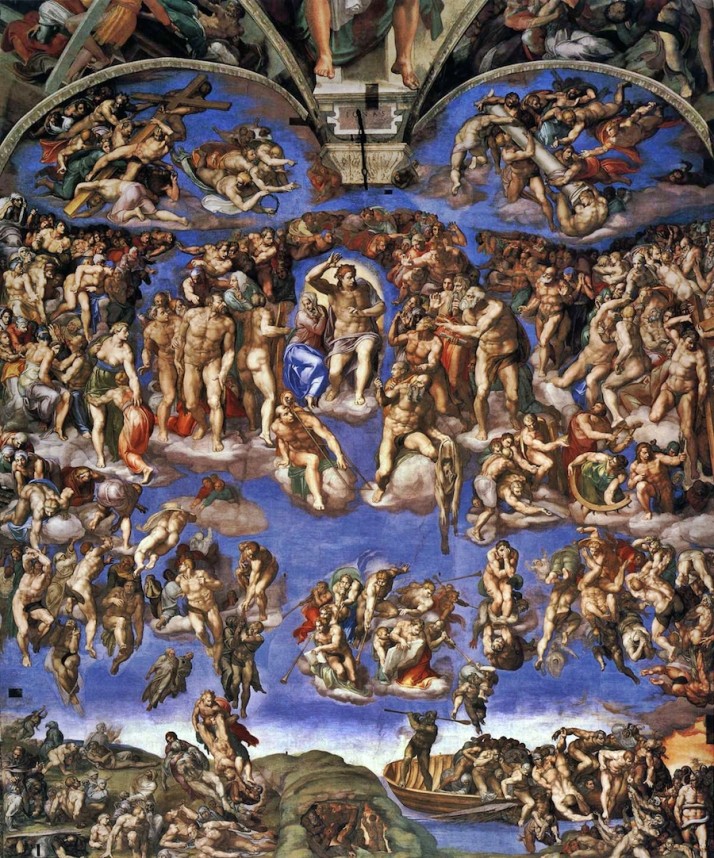
The Last Judgement by a much older and more accomplished Michelangelo breaks with the established representations in many ways. The central figure is a buff, determined Christ dismissing his mother’s pleas for mercy – he’s on a mission. Notice his body is twisted like the Laocoön or the Belvedere Torso we saw earlier in the museum. Michelangelo again works himself into the composition in the form of the flayed skin of St. Bartholomew (centre-right just below Christ) perhaps in acknowledgement of his own mortality. Photo credit: Wikipedia
This one however, caused a lot of controversy for a lot of reasons. I have to say that initially it seems very different in its bolder use of colour – the blue-sky background contrasts strikingly with the rest of the room, and Michelangelo painted over a scene from the life of Christ, another from the life of Moses and two of his own lunettes to entirely cover the alter wall. At first I didn’t like this un-cohesive jarring effect, but as we listened to the Vatican audioguide and Rick Steve’s excellent Sistine Chapel excerpt about the meaning, symbolism and the ruckus it caused I started to love it.. it’s the work of a reflecting, contemplative genius with a subtly wry sense of humour. We spent a good hour in the Sistine Chapel, and we could easily have stayed longer just contemplating the events these frescos have witnessed, and of course the frescos themselves.
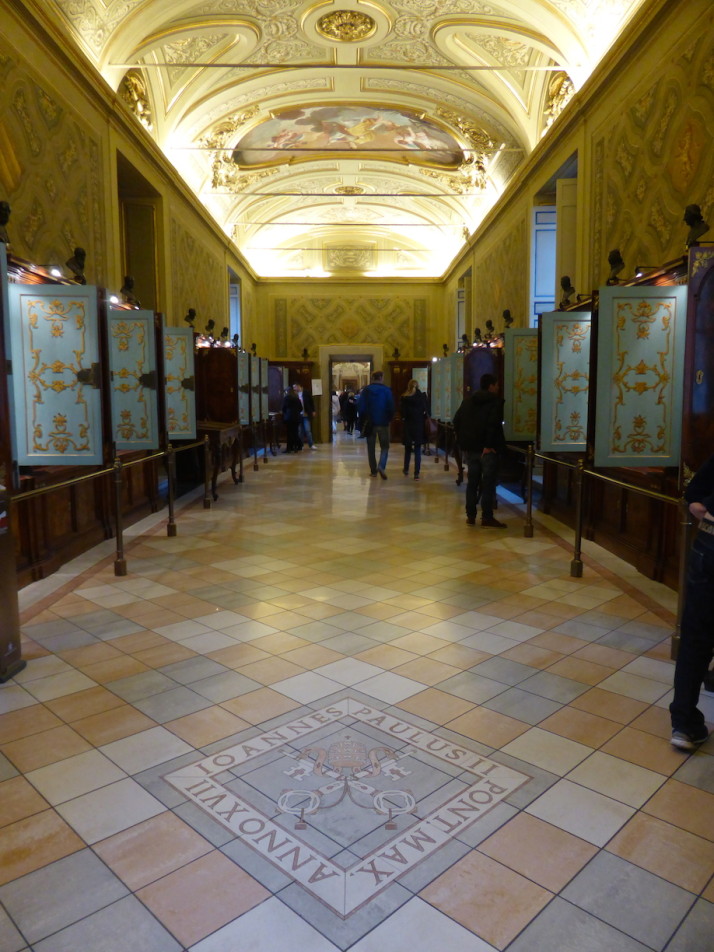
On leaving the Sistine Chapel we walked through the Sala dei Papiri (Rooms of Paper) and the Museo Cristiano which were kind of like libraries with bookcases, papyrus and globes on display. These rooms were a little sparse and well, what tops the Sistine Chapel?!
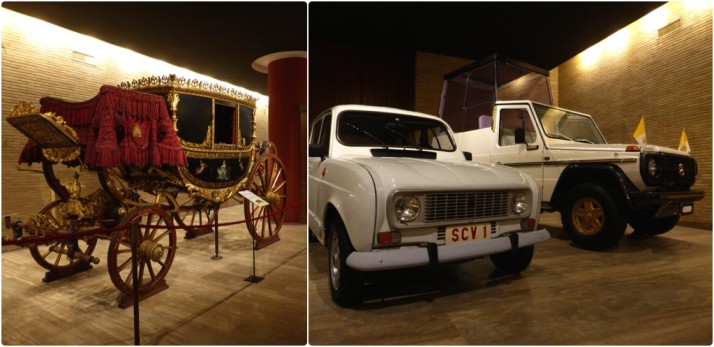
Possibly Pope Mobiles? Across the courtyard and underground is the Padiglione della Carrozze or Pavillion of Carriages – the evolution of the Pope Mobiles from elaborate sedan chairs, through horse and carriages to the latest 4×4 bullet-proof go-anywhere-bless-anything off-roaders, and other vehicles donated to the Pope
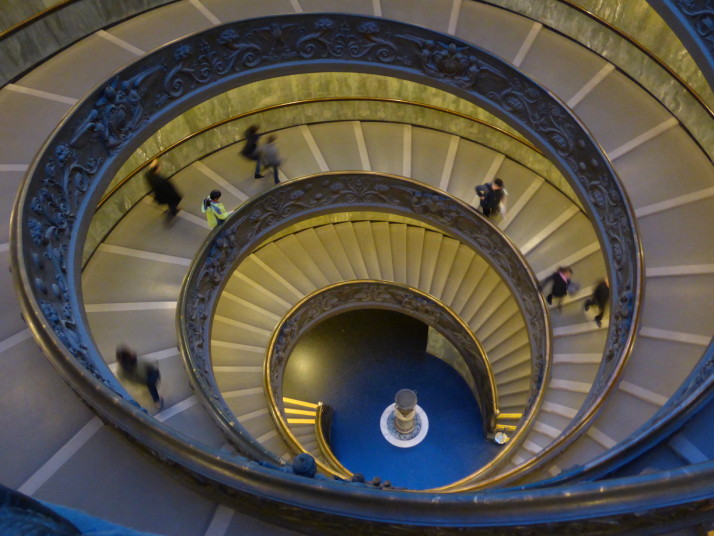
The exit of the Vatican Museum is down either side of Bramante’s double helix staircase which leaves you almost right where you started having walked through 7km of the finest Italian art ever created
We absolutely, thoroughly enjoyed the Vatican Museums. Sure, it’s a full day but the exhibitions are varied and because the Sistine Chapel is near the end (if you do the complete itinerary as we did) it felt like we were always working up to it. The anticipation carried us through, and what a finale. Wow.
Tips for visiting the Vatican Museums
Here are a couple of tips from our experience of having just been..
- Buy the admission ticket a day or more in advance to skip the queue, even in the off-season, you’ll need the extra time inside.
- The audioguide is excellent and well worth the extra €7 per unit. Bring your own headphones as there’s an extra charge of €1.50 for a single-earpiece. There are sockets for two sets of headphones so you could also share a single unit.

 two year trip
two year trip